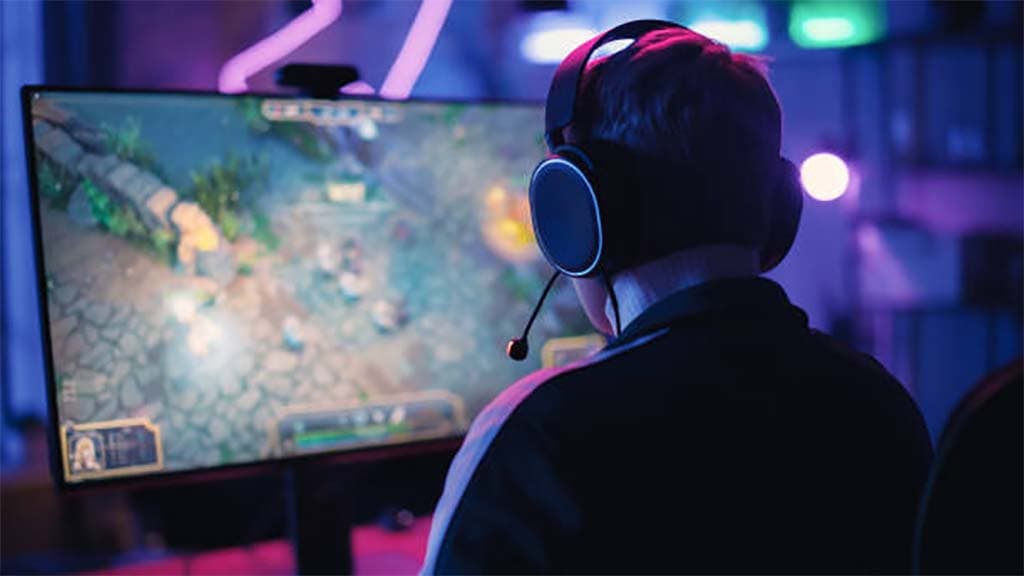Physical Health Implications of Prolonged Gaming
The realm of video games, once a niche pastime, has burgeoned into a mainstream cultural phenomenon. While games offer a window into fantastical worlds, provide an avenue for social interaction, and challenge our cognitive faculties, there’s a growing dialogue around the health implications of the time we invest in them. For many, what starts as an occasional diversion can quickly morph into hours-long sessions. As engagement deepens, physical health can take a back seat. This article aims not to vilify gaming but to highlight some of its physical repercussions and promote a more balanced and health-conscious approach to this beloved pastime.
The Posture Problem: Musculoskeletal Issues
A signature image that comes to mind when one thinks of an avid gamer might be someone hunched over a console or PC, engrossed in a virtual quest. While this posture might feel natural in the heat of the moment, over time, it can wreak havoc on the spine and surrounding muscles. The curvature of the spine, when seated improperly, can lead to long-term ailments. Chronic neck and back pain, often dismissed as minor niggles, can become debilitating if not addressed. Gamers, both young and old, need to recognize these signs early and take corrective measures to prevent long-term damage.
Vision Strain: Effects on the Eyes
The human eye, a marvel of evolution, is not optimized for prolonged screen time. As pixels dance and shift during intense gaming sessions, our eyes continuously adjust, leading to strain. This strain is more than just a fleeting discomfort; it’s a sign of overexertion. Dry eyes, periodic blurred vision, and tension headaches are common complaints among gamers. Known broadly as “computer vision syndrome”, this condition is a testament to the challenges our eyes face in the digital age, with gaming being a significant contributor.
Sedentary Lifestyle: Weight and Cardiovascular Concerns
In a world increasingly driven by digital entertainment, it’s easy to overlook the basics of human health. Our evolutionary history did not prepare us for hours of motionless entertainment. As gamers plant themselves firmly for those epic gaming marathons, their bodies quietly bear the brunt of inactivity. Extended sedentary behavior can significantly affect metabolic rates, leading to potential weight gain. This shift in physical status, over time, can catalyze a slew of health issues, from high blood pressure to elevated cholesterol levels. Beyond the weight implications, the heart, a vital muscle, requires regular activity to remain healthy. Extended periods of sitting and gaming can compromise its efficiency, raising the specter of cardiovascular diseases. The very essence of life, our circulatory system, can be negatively impacted when gaming overshadows regular physical movement.
Repetitive Strain Injuries: The Gaming Affliction
Within the intricate dance of fingers on a controller or a keyboard lies a hidden risk: the danger of overuse. Gamers, in their quest for precision and speed, can sometimes push their muscles and tendons to the limit. This persistent, repetitive motion can lead to localized injuries, often brushed off until they become hard to ignore. Repetitive strain injuries, known in medical parlance as RSIs, are deceptive. They might start as a faint ache but can escalate to chronic pain conditions. The gamer’s tools – the hands and wrists – can experience tenderness, throbbing, or even loss of sensation. Prolonged, untreated RSIs can lead to conditions such as carpal tunnel syndrome or tendinitis. These ailments, once the domain of certain professions, are now making their presence felt in the gaming community, emphasizing the need for caution and care.
Recommendations for Healthier Gaming Habits

The intersection of passion and health often requires a well-charted roadmap. Gamers, with their intense dedication, can sometimes lose sight of the bigger picture. But with awareness, many of the health pitfalls of gaming can be mitigated. Short, regular breaks, for instance, are a boon for the body and mind. These intervals can be used to stretch, hydrate, or even engage in quick exercises. Ergonomics plays a pivotal role too. A well-structured gaming environment, with the right chair height, screen level, and controller or mouse positioning, can significantly reduce the risk of posture-related ailments. Eye care is equally paramount. Following the 20-20-20 rule, where one takes a 20-second break to view something 20 feet away every 20 minutes, can alleviate digital eye strain. The overarching theme is balance – marrying the thrill of gaming with the wisdom of health-centric practices.
Conclusion: Striking a Balance between Gaming and Health
Gaming’s meteoric rise in modern culture is undeniable. It provides solace, challenges, and social connections to millions. Yet, as with most things in life, moderation is key. Ensuring that gaming enriches rather than impedes health is crucial. By recognizing the potential physical pitfalls and taking proactive steps, gamers can ensure they’re equipped not just for virtual challenges, but real-life ones too. Physical well-being, after all, is the foundation upon which all other pursuits rest. As the gaming narratives unfold and worlds are conquered, it’s essential to remember that the most vital protagonist in any story is oneself, and one’s health is the ultimate quest.



